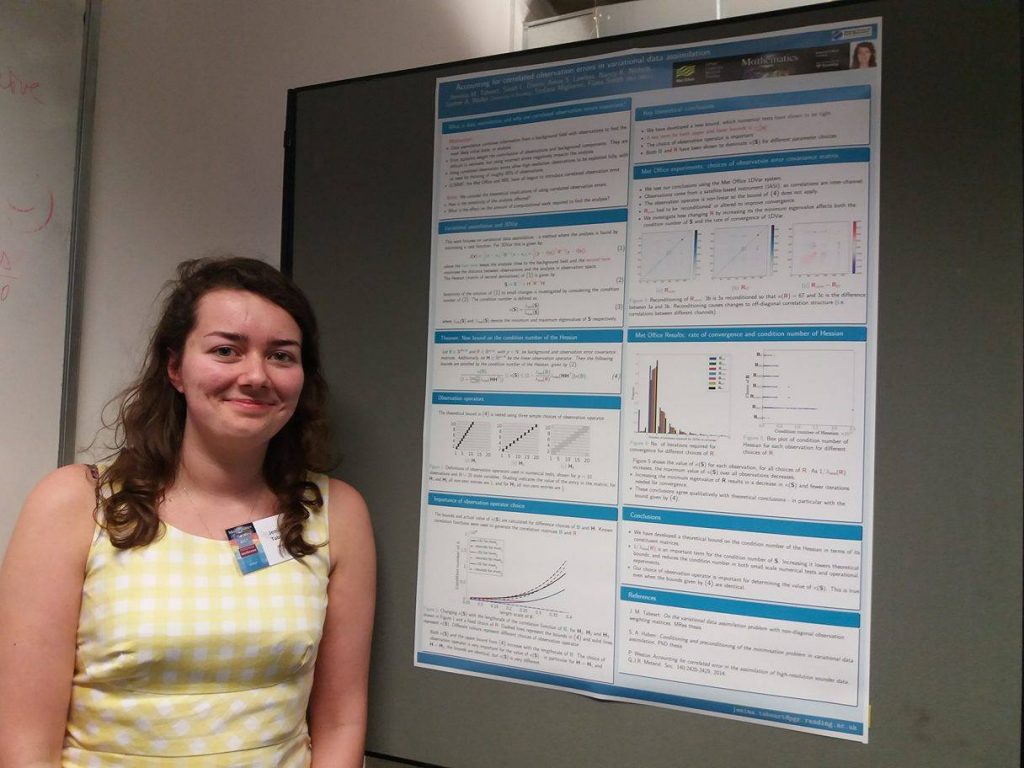 by Jemima Tabeart
by Jemima Tabeart
On 20th-22nd March the Mathematics of Planet Earth Centre for Doctoral Training (MPE CDT) held its third annual Jamboree event. This is a celebration of the work of the staff and students of the CDT and includes seminars from industrial and academic speakers, as well as the opportunity for students to present their research. For the first time this year, the first two days of the Jamboree were used to host an Industrial study group. Representatives from EDF Energy and AIR Worldwide (catastrophe modelling for the insurance and re-insurance industry) posed real-world problems to cross-cohort groups of students, who then attempted to provide some new mathematical insight into possible solutions.
Our group was given a task by EDF Energy to investigate the interaction of extreme wind and rain events in the UK. EDF Energy’s assets in the UK include nuclear and other types of power plants, so understanding of extreme events is important in order to they can take appropriate safety measures. Currently extreme rain and wind events are considered separately, and we were asked to consider ways of determining how to define and deal with extreme wind-rain events. We were given hourly reanalysis data from the last 40 years, on a coarse 1 degree grid over the UK. The group split into two parts: one looking at more conceptual ideas about how extreme events can be caused by an interaction of factors, and the other considering the data provided.
Our part of the group identified some known extreme weather events, and focused on the data for these time periods. We looked at which events had both extreme wind and extreme rain, and mapped these to geographical locations to see where extreme wind-rain occurs most frequently. We also tried to see if there was a time lag between rain and wind events in the same location. Initial plots indicated that the most likely lag time was 0 hours, although this might be due to the relatively coarse resolutions. Other members of the group also suggested a method for combining the threshold values for extreme wind and rain to create a combined parameter. As well as a presentation of the main ideas that took place on the day to industry representatives, written reports will be sent to the respective companies so that they can take the suggestions further.
The study group was a great opportunity for cross-cohort work that brought together students with contrasting research interests. The challenge of producing something in a short amount of time is very different to what we normally expect as PhD students, and the ideas of getting stuck in straight away and not spending hours agonising over every decision is something that will be useful going forward. I really enjoyed working with real-world data and on problems outside my usual subject area – applying techniques I’ve learned during my PhD to other applications is very satisfying, and gives me the confidence that I am developing my transferable skills through my research!
